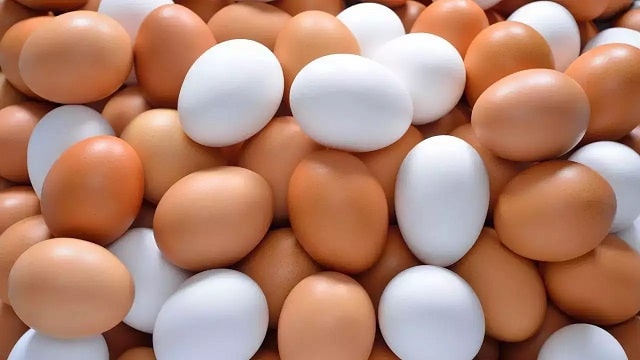A question as simple as the colour of the eggshell ( one of the seven parts that make it up) supports certain erroneous ideas about its origin, how resistant it may be, its nutritional value, and even the final price that the public pays for it. And it doesn’t hurt to know a little more about some of the characteristics of this food.
Why are eggs white or brown?
Whatever you may have heard, and regardless of what is speculated with greater or lesser accuracy in the maelstrom of the blessed social networks, there is only one reason why we usually find white and brown eggs on the shelves of stores: pure genetics.
By the breed of the chicken
There are up to 2,600 breeds of chickens in the world, which is a lot. In Spain alone, there are 32 native breeds, from the Castilian Black to the Andalusian Blue. They are classified according to their origin (natural or hybrid), geographical origin, size, and purpose (for meat, for laying eggs or both), with the improvement of centuries through the crossbreeding carried out by humanity. As with dogs, cats, cows and other familiar animals.
But the colour of their eggs, which have a calcified protective layer, varies according to a specific characteristic of the bird from which they have come: the white ones are owed to white hens and the brown ones to brown ones. But not in relation to their plumage, but to the lobes of their ears, situated higher than the wattles and lower than the disc-shaped eyes, and to the crests on their little heads. A light tone in these two fleshy parts provides us with milky eggs, and a dark or reddish one, brown. It’s that simple.
What is the relationship between color, size, and proportion of egg white and yolk?
As regards the size of eggs, for white or brown hens, there are three issues to consider. To begin with, they are classified as size S, which corresponds to those that weigh up to 53 grams and are not usually sold in supermarkets or grocery stores, M for those that are between 53 and 63, L for those that range from 63 to 73 and XL, which includes those that exceed 73 grams.
On the other hand, the yolk normally makes up 33% of an egg, the white 57%, and the shell the remaining 10%. The size of brown hens is usually greater than that of white hens, and for this reason they lay larger eggs than the latter, and young hens lay smaller eggs, but their yolk is proportionally larger.
What causes the color of eggshells?
Most chicken eggs have a white or brown shell at various levels, so it is not surprising that consumers are confused about this difference. This is due to a pigment in the red blood cells of these birds, protoporphyrin, which is deposited in the white calcified layer and stains it until it becomes darker. However, in reality, there are more colours: different shades of blue and green, and even spots.
In the first case, a curious enzyme transforms hemoglobin into biliverdin, and with it the appearance is obtained in the same way; but it only occurs in Araucanian chickens from Chile, or in the Lushi and Dongxiang breeds from China. And the classic mottling of quail is due to the accumulation of protoporphyrin in the oviduct, which connects the ovary with the cloaca through which the eggs are expelled.
Myths about brown eggs
In reality, although there are several myths (not very powerful ones, mind you), there are no differences in the taste of white eggs and brown eggs that depend on their colour. Neither are they more nutritious, preferable or more expensive because of this:
Taste and nutritional values
Brown eggs are not in any way more natural or of a higher quality, in terms of the hardness of their shell or their nutritional properties than white ones. Older hens lay them less resistant and whether this simple delicacy can be revealed as more substantial or exquisite depends, in all its letters, on the degree of quality of the food given to the animals. And that is all.
The price
What you end up paying for a carton of eggs in a store, as with any other consumer good (and without thinking about situations of unjustified price inflation), depends on what it costs to produce it and its distribution.
The larger size of brown hens means that their breeders must provide them with more feed to keep them healthy and, therefore, have a larger budget to buy it. If the costs of producers increase, the final cost for households also increases, and therefore, it may be necessary to invest a few cents more in the ingredients of a brown egg omelette.
